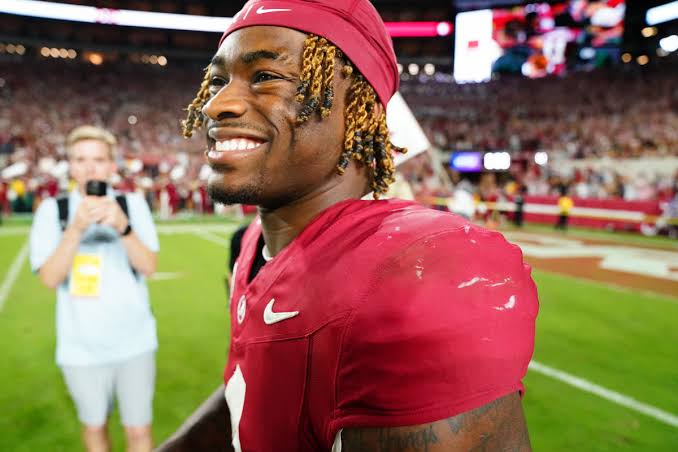The Georgia Bulldogs have sent shockwaves through the college football world, announcing the signing of Alabama Crimson Tide transfer quarterback Jalen Millroe to a record-shattering, $677 million Name, Image, and Likeness (NIL) deal. The unprecedented contract, dwarfing any previous NIL agreement, marks a monumental shift in the landscape of college athletics and raises significant questions about the future of the NCAA.
The sheer magnitude of the deal – a staggering $677 million – surpasses all previous NIL deals by a considerable margin. While individual players have secured lucrative contracts, often exceeding seven figures, Millroe’s agreement represents a paradigm shift. It’s a figure previously unimaginable in the context of collegiate sports, challenging the long-held amateurism model that has defined college athletics for decades.
The announcement, made jointly by the University of Georgia, Millroe’s representatives, and a consortium of unnamed corporate sponsors, was met with a mixture of awe, skepticism, and outright controversy. The specifics of the deal remain largely shrouded in secrecy, with only a few details released to the public. However, it’s understood that the compensation package encompasses a variety of elements, including a substantial upfront signing bonus, ongoing annual salary, endorsements, and equity stakes in various ventures connected to Millroe’s image.
The involvement of a consortium of sponsors further complicates the narrative. While their identities remain undisclosed, speculation points towards a blend of national and international corporations, recognizing the immense marketing potential linked to a high-profile athlete like Millroe. This corporate involvement suggests a sophisticated and strategically planned approach to maximizing the return on investment, highlighting the lucrative potential of the modern NIL landscape.
Millroe himself, a highly touted quarterback with significant potential, is undeniably the centerpiece of this record-breaking agreement. His transfer from Alabama, a perennial powerhouse in college football, to Georgia, another consistent contender, fueled considerable speculation about his future. The scale of his NIL deal, however, far exceeds what even the most optimistic observers anticipated. It solidifies his position as a leading figure in the evolving world of college athlete compensation.
The implications of this deal reach far beyond the confines of the University of Georgia and Jalen Millroe’s personal success. It raises critical questions regarding the fairness and equity within the NCAA system. The vast disparity between Millroe’s earnings and those of his fellow student-athletes, even those with exceptional talent, inevitably calls into question the fundamental principles of amateurism. Critics argue that such exorbitant deals exacerbate existing inequalities and create a two-tiered system, benefiting a select few while leaving the majority behind.
The deal also forces a reconsideration of the NCAA’s regulatory framework concerning NIL agreements. The existing guidelines, while attempting to address the rapid changes in the landscape, often seem inadequate in the face of such massive contracts. The sheer scale of Millroe’s deal pushes the boundaries of what was initially envisioned, forcing the NCAA to grapple with the practical and legal challenges of managing such substantial financial transactions within the existing framework. It’s likely to lead to renewed calls for stricter regulations or even a complete overhaul of the NIL system to prevent a further escalation of financial disparities.
Moreover, the impact extends beyond the NCAA itself. The precedent set by Millroe’s contract could transform the landscape of college sports recruitment. Prospective student-athletes will likely weigh NIL deals more heavily in their college choices, prioritizing financial opportunities alongside athletic programs and academic opportunities. This shift could profoundly alter the dynamics of college recruiting, potentially leading to a more fluid and market-driven system.
The $677 million deal represents a pivotal moment in the history of college athletics. It’s a testament to the growing influence of NIL deals and the immense marketing potential of college athletes. However, it also underscores the complex challenges inherent in navigating this evolving landscape, raising crucial questions about fairness, equity, and the very definition of amateurism in college sports. The long-term consequences of Millroe’s record-breaking contract remain to be seen, but one thing is certain: it has irrevocably changed the game. The future of college athletics, once seemingly predictable, is now shrouded in uncertainty, with the Millroe deal serving as a stark reminder of the profound transformation underway.

